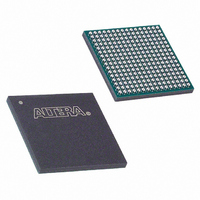EP3C25F256C7N Altera, EP3C25F256C7N Datasheet - Page 83

EP3C25F256C7N
Manufacturer Part Number
EP3C25F256C7N
Description
IC CYCLONE III FPGA 256-FBGA
Manufacturer
Altera
Series
Cyclone® IIIr
Datasheets
1.EP3C5F256C8N.pdf
(5 pages)
2.EP3C5F256C8N.pdf
(34 pages)
3.EP3C5F256C8N.pdf
(66 pages)
4.EP3C5F256C8N.pdf
(14 pages)
5.EP3C5F256C8N.pdf
(76 pages)
6.EP3C25F256C7N.pdf
(274 pages)
Specifications of EP3C25F256C7N
Number Of Logic Elements/cells
24624
Number Of Labs/clbs
1539
Total Ram Bits
608256
Number Of I /o
156
Voltage - Supply
1.15 V ~ 1.25 V
Mounting Type
Surface Mount
Operating Temperature
0°C ~ 85°C
Package / Case
256-FBGA
Family Name
Cyclone III
Number Of Logic Blocks/elements
24624
# I/os (max)
156
Frequency (max)
437.5MHz
Process Technology
65nm
Operating Supply Voltage (typ)
1.2V
Logic Cells
24624
Ram Bits
608256
Operating Supply Voltage (min)
1.15V
Operating Supply Voltage (max)
1.25V
Operating Temp Range
0C to 85C
Operating Temperature Classification
Commercial
Mounting
Surface Mount
Pin Count
256
Package Type
FBGA
For Use With
544-2370 - KIT STARTER CYCLONE III EP3C25
Lead Free Status / RoHS Status
Lead free / RoHS Compliant
Number Of Gates
-
Lead Free Status / Rohs Status
Compliant
Other names
Q4433068
Available stocks
Company
Part Number
Manufacturer
Quantity
Price
Company:
Part Number:
EP3C25F256C7N
Manufacturer:
ALTERA44
Quantity:
633
Part Number:
EP3C25F256C7N
Manufacturer:
ALTERA/阿尔特拉
Quantity:
20 000
Part Number:
EP3C25F256C7NG
Manufacturer:
ALTERA/阿尔特拉
Quantity:
20 000
Chapter 5: Clock Networks and PLLs in the Cyclone III Device Family
Hardware Features
© December 2009
Altera Corporation
There are two ways to use the clock switchover feature:
■
■
Figure 5–15
automatic loss of clock detection. Here, the inclk0 signal remains low. After the
inclk0 signal remains low for approximately two clock cycles, the clock-sense
circuitry drives the clkbad[0] signal high. Also, because the reference clock signal is
not toggling, the switchover state machine controls the multiplexer through the
clksw signal to switch to inclk1.
Figure 5–15. Automatic Switchover Upon Clock Loss Detection
Note to
(1) Switchover is enabled on the falling edge of inclk0 or inclk1, depending on which clock is available. In this
Use the switchover circuitry for switching from inclk0 to inclk1 running at the
same frequency. For example, in applications that require a redundant clock with
the same frequency as the reference clock, the switchover state machine generates
a signal that controls the multiplexer select input shown in
case, inclk1 becomes the reference clock for the PLL. This automatic switchover
can switch back and forth between the inclk0 and inclk1 clocks any number of
times, when one of the two clocks fails and the other clock is available.
Use the clkswitch input for user- or system-controlled switch conditions. This is
possible for same-frequency switchover or to switch between inputs of different
frequencies. For example, if inclk0 is 66 MHz and inclk1 is 200 MHz, you must
control the switchover because the automatic clock-sense circuitry cannot monitor
primary and secondary clock frequencies with a frequency difference of more than
20%. This feature is useful when clock sources can originate from multiple cards
on the backplane, requiring a system-controlled switchover between frequencies
of operation. Choose the secondary clock frequency so the VCO operates in the
recommended frequency range. Also, set the M, N, and C counters accordingly to
keep the VCO operating frequency in the recommended range.
figure, switchover is enabled on the falling edge of inclk1.
Figure
5–15:
shows a waveform example of the switchover feature when using
activeclock
clkbad0
clkbad1
muxout
inclk0
inclk1
(1)
(Note 1)
Cyclone III Device Handbook, Volume 1
Figure
5–14. In this
5–19














